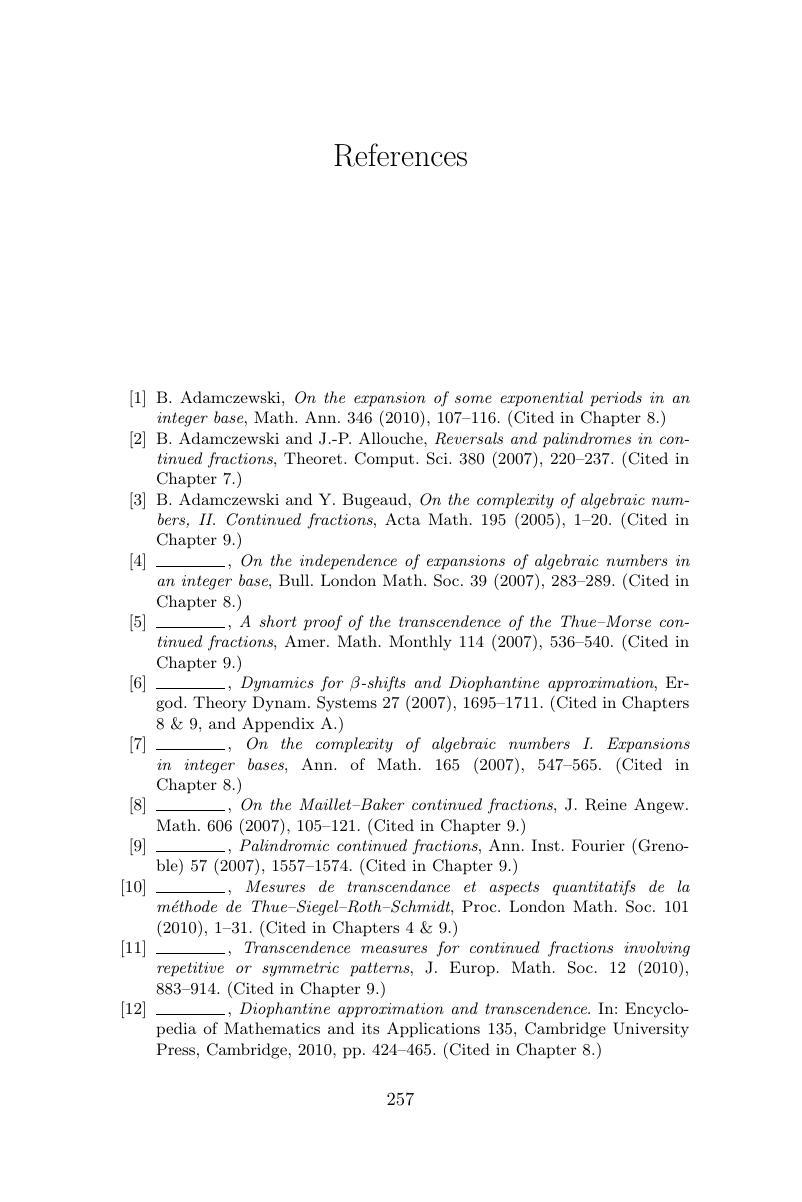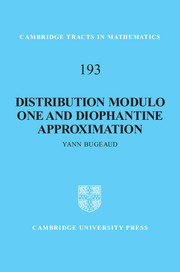Book contents
- Frontmatter
- Contents
- Preface
- Frequently used notation
- 1 Distribution modulo one
- 2 On the fractional parts of powers of real numbers
- 3 On the fractional parts of powers of algebraic numbers
- 4 Normal numbers
- 5 Further explicit constructions of normal and non-normal numbers
- 6 Normality to different bases
- 7 Diophantine approximation and digital properties
- 8 Digital expansion of algebraic numbers
- 9 Continued fraction expansions and β-expansions
- 10 Conjectures and open questions
- Appendix A Combinatorics on words
- Appendix B Some elementary lemmata
- Appendix C Measure theory
- Appendix D Continued fractions
- Appendix E Diophantine approximation
- Appendix F Recurrence sequences
- References
- Index
- References
References
Published online by Cambridge University Press: 05 October 2012
- Frontmatter
- Contents
- Preface
- Frequently used notation
- 1 Distribution modulo one
- 2 On the fractional parts of powers of real numbers
- 3 On the fractional parts of powers of algebraic numbers
- 4 Normal numbers
- 5 Further explicit constructions of normal and non-normal numbers
- 6 Normality to different bases
- 7 Diophantine approximation and digital properties
- 8 Digital expansion of algebraic numbers
- 9 Continued fraction expansions and β-expansions
- 10 Conjectures and open questions
- Appendix A Combinatorics on words
- Appendix B Some elementary lemmata
- Appendix C Measure theory
- Appendix D Continued fractions
- Appendix E Diophantine approximation
- Appendix F Recurrence sequences
- References
- Index
- References
Summary

- Type
- Chapter
- Information
- Distribution Modulo One and Diophantine Approximation , pp. 257 - 298Publisher: Cambridge University PressPrint publication year: 2012



